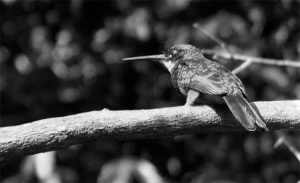Laura Nayibi Arias, Culture Editor
Doesn’t it always seem like governments only attempt to protect the natural environment when natural disasters triggered by environmental degradation occur? Even in such situations some still don’t. But wouldn’t it be best if we just protected our land, water and air thus preventing many of these unfortunate events? Do environmental catastrophes have to occur for governments to take environmental initiatives? Not always.
Bolivians plan to conserve rather than destroy and attempt to restore.

With the fights against issues such as hydrofracking and the creation of pipelines that have been occurring since before 2010, and the different initiatives being established in America to prevent greater contributions to global warming, there has not been much focus on what other countries have been doing in efforts to reduce their environmental impact. To mark National Wetland’s Day early last month, the Bolivian government established the world’s largest protected wetland. The Llanos de Moxos, which stretches to about 6.9 million hectares, is located on the southwestern corner of the Amazon basin and consists of a series of savannas. According to the World Wildlife Fund (WWF), these wetlands are especially known for their rich natural diversity with “131 species of mammals [that] have been identified to date, 568 different birds, 102 reptiles, 62 amphibians, 625 fish and at least 1,000 plant species.”
Without being a nationally protected wetland, these species would otherwise be at risk of, like many species in other wetlands, being exposed to a variety of human-made environmental alterations which usually lead to the degradation of the wetland and loss of the biodiversity.

Not only is it critical that the Moxos wetlands are protected in order to prevent such damage from happening, but to prevent floods and regulate the region’s water cycle. With this initiative, the Bolivian government has been applauded by the WWF for its recognition of the importance of the wetlands not only to the aesthetic beauty of Bolivia but to the environment.
As suggested by the WWF, Juan Pablo Cardozo Arnez, Bolivian Deputy Minister for the Environment stated, “We recognize the significant role of these wetlands in the conservation of Mother Earth, as well as the importance of the declaration confirming the Llanos de Moxos as internationally protected wetlands.”
He goes on to say: “we call upon all countries to incorporate [environmental] rights into their legislation and to comply with existing international agreements in this respect, so that human beings can begin to live in complete harmony and equilibrium with Mother Earth.” Through these words, Arnez captures the essence of environmental ethics which suggests that humans should recognize nature as part of their existence because in doing so we reach a common ground where nature’s limits are understood and humans have to adapt to them, as opposed to the other way around.
By referring to and approaching the earth as an entity—Mother Earth, we are closer to reaching that equilibrium because by doing this we personify nature, thus treating her as, well, a person and if you know anything about the golden rule, it claims that one should treat others as they themselves would like to be treated.
I too applaud the Bolivian government for their commitment to protecting the Earth.
Leave a Reply